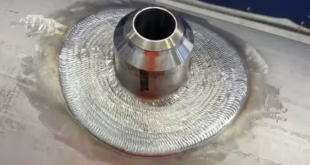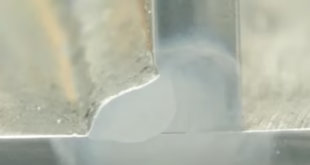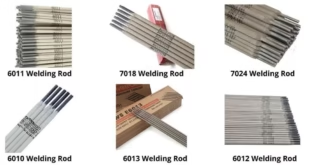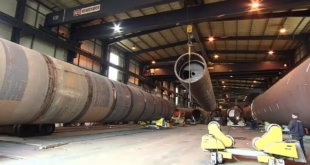How Robotic Technology is Transforming Welding?
The welding industry is experiencing a seismic shift as robotic technology takes center stage, revolutionizing how welding processes are carried out. Traditionally reliant on manual labor, welding is now integrating advanced robotics to enhance productivity, precision, and safety. This transformation is driven by the growing demand for high-quality, consistent welds in industries such as automotive, aerospace, and construction. As robotic technology evolves, it is opening new avenues for automating complex welding tasks, minimizing errors, and increasing overall efficiency. This article delves deep into the world of robotic welding, exploring its benefits, types, applications, and its impact on the future of the welding industry.
What is Robotic Welding?
Robotic welding involves the use of programmable mechanical devices to automate the welding process, performing various welding tasks with minimal human intervention. These systems are equipped with advanced sensors, controllers, and robotic arms to execute welding with extreme precision. Robotic welders are designed to handle repetitive and complex tasks, making them ideal for large-scale manufacturing operations where consistency is paramount.
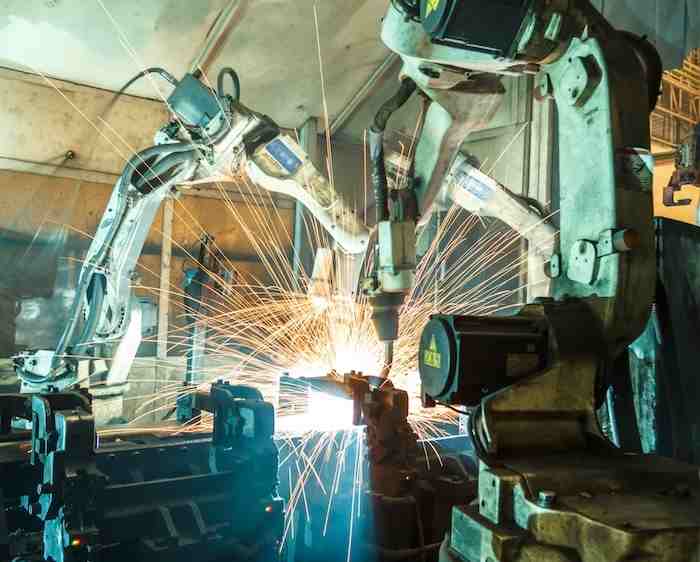
Types of Robotic Welding Systems
Robotic welding systems can be broadly categorized into two main types:
- Fully Automated Welding Systems:
In these systems, the entire welding process is automated, including loading, welding, and unloading of materials. Such systems are typically used in mass production environments where high-speed and repetitive welding operations are required. - Semi-Automated Welding Systems:
Semi-automated systems involve a combination of human and robotic control, where the human operator sets up the workpiece, and the robotic arm performs the welding. This approach is often used for custom or small-batch production runs that require a degree of flexibility.
Additionally, robotic welding systems can be further classified based on the welding process used:
- Arc Welding Robots: Used for MIG, MAG, and TIG welding applications, arc welding robots are designed to deliver consistent and precise welds, ideal for metals such as aluminum, stainless steel, and mild steel.
- Spot Welding Robots: Primarily used in the automotive industry, spot welding robots are engineered to create secure joints by clamping together overlapping metal sheets.
- Laser Welding Robots: Utilizing high-energy laser beams, these robots perform intricate welding tasks with extreme precision, ideal for thin materials and delicate components.
Key Components of a Robotic Welding System
- Robotic Arm:
The robotic arm is the core component, providing the flexibility and dexterity needed to execute complex welds. It is equipped with a welding torch or tool at its end, controlled by programmable software. - Controller:
The controller serves as the brain of the robotic welding system, managing all movements and actions. It interprets the programmed instructions and directs the robotic arm to perform specific tasks. - Welding Torch:
The torch is the tool that delivers the welding arc or heat to the workpiece. It is designed to be highly precise, ensuring that the weld bead is placed accurately along the joint. - Sensors:
Robotic welding systems are equipped with a variety of sensors, including vision sensors, proximity sensors, and temperature sensors, to monitor and adjust the welding process in real time. - Positioners:
Positioners are devices used to hold and manipulate the workpiece, ensuring that it is accurately aligned for the robotic arm to perform welding. Positioners are critical in complex assemblies where multiple welds are required.
Benefits of Robotic Welding Technology
The adoption of robotic welding technology offers several significant advantages over traditional manual welding methods:
- Increased Precision and Consistency:
Robotic welders can perform the same welding task with millimeter precision, ensuring consistent quality across every weld. This eliminates the variability and defects often associated with human welders. - Enhanced Productivity:
Robotic welding systems can operate at higher speeds and for extended periods without fatigue, significantly boosting productivity. They can handle repetitive tasks that would be time-consuming and tedious for human operators. - Reduced Waste and Costs:
By minimizing errors and rework, robotic welding systems reduce material waste, leading to cost savings. Additionally, they optimize the use of consumables like filler wire and shielding gas. - Improved Safety:
Welding is a hazardous task involving high temperatures, toxic fumes, and the risk of burns or injuries. Robotic systems reduce the exposure of human workers to these dangers, ensuring a safer working environment. - Flexibility in Complex Applications:
Modern robotic systems are equipped with multi-axis arms that can reach intricate and hard-to-access areas, making them suitable for complex welding applications in industries like aerospace and electronics.
Challenges of Implementing Robotic Welding
Despite its many advantages, implementing robotic welding technology comes with its own set of challenges:
- High Initial Investment:
The cost of setting up a robotic welding system is significant, involving the purchase of robots, controllers, sensors, and software. This initial expense can be a barrier for small and medium-sized enterprises (SMEs). - Complex Programming and Setup:
Programming a robotic welder requires specialized skills and knowledge. It can be time-consuming, especially for custom or intricate welding tasks, making it less suitable for small-batch production. - Maintenance and Downtime:
Robotic systems require regular maintenance to ensure optimal performance. Downtime due to malfunctions or programming errors can disrupt production schedules. - Adaptability to Changing Specifications:
Unlike human welders, robotic systems may struggle to adapt to sudden changes in specifications or design alterations, requiring reprogramming or modification of fixtures.
Applications of Robotic Welding Across Industries
Robotic welding technology is used in a wide range of industries, including:
- Automotive Manufacturing:
The automotive industry is the largest user of robotic welding systems, employing robots for spot welding car bodies, frames, and subassemblies. - Aerospace Industry:
Robotic welding is used for manufacturing aircraft components, where precision and minimal distortion are crucial. Laser welding robots are commonly employed for joining lightweight materials. - Shipbuilding and Marine Engineering:
Robots are used to weld large sections of ships, reducing the time and labor required for assembling complex structures. - Construction and Structural Steelwork:
In the construction industry, robotic welding is used for prefabricating steel structures, offering strong, consistent welds in large-scale projects. - Electronics Manufacturing:
With the rise of miniaturization, robotic welding is being used for micro-welding applications in electronics, where tiny, precise welds are required.
The Future of Robotic Welding
The future of robotic welding is poised to be shaped by emerging technologies like artificial intelligence (AI) and machine learning (ML). These advancements will enable robots to learn and adapt to new welding scenarios autonomously, improving efficiency and reducing programming time. Collaborative robots, or cobots, are another trend, designed to work alongside human welders in a shared workspace, combining the precision of robotics with the adaptability of human operators.
The integration of IoT (Internet of Things) technology will also play a significant role, allowing welding robots to communicate and share data across a connected network. This will enable predictive maintenance, real-time process optimization, and remote monitoring, further enhancing the productivity and reliability of robotic welding systems.
Conclusion
Robotic technology is transforming the welding landscape, bringing unparalleled precision, efficiency, and safety to industries that rely heavily on high-quality welds. From automotive manufacturing to aerospace engineering, robotic welding systems are enabling companies to meet the growing demand for complex assemblies and high-volume production with exceptional consistency. While the initial investment and setup complexity can pose challenges, the long-term benefits of adopting robotic welding far outweigh the costs. As technology continues to evolve, robotic welding is set to become even more intelligent, adaptive, and integral to the future of manufacturing and construction industries.
 Welding of Welders All about Welding and Welders
Welding of Welders All about Welding and Welders
